2025 Pool Deck Trends in the Southeast – Simplified Style & Function Guide
Riviera Beach Driveway and Patio Paver Contractor
2025 Pool Deck Trends in the Southeast – Simplified Style & Function Guide
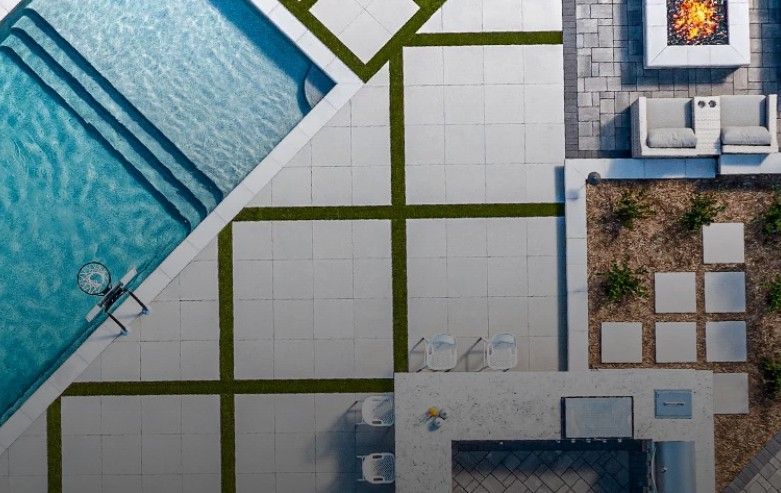
When it gets hot in the Southeast, your pool deck becomes more than just a walkway—it’s a key part of outdoor living. In 2025, homeowners are choosing pool decks that combine beauty, comfort, and practicality. Here are the top trends:
CONTACT US TODAY TO GET A FREE QUOTE ON YOUR OUTDOOR PAVER PROJECT
1. Porcelain That Looks Like Stone
Porcelain pavers that look like natural stone (like travertine or bluestone) are in. They’re durable, heat- and slip-resistant, and much easier to maintain than real stone—perfect for Florida’s hot, humid weather.
2. Light, Cool Colors
Lighter pavers in shades of white, ivory, and soft gray reflect sunlight and stay cooler to walk on. These colors also give your pool deck a clean, coastal feel that never goes out of style.
3. Creative Patterns
Simple square layouts are out. In are patterns like herringbone, basket weave, and mix-and-match styles. These give even small pool areas a custom, high-end look.
4. Indoor-Outdoor Flow
More homeowners are matching their pool deck with their indoor floors to create a smooth, seamless transition. It makes the outdoor space feel larger and more connected to the home.
5. Eco-Friendly Permeable Pavers
With more focus on sustainability, permeable pavers are growing in popularity. They let rainwater drain through the surface, reducing runoff and helping prevent erosion—especially helpful in rainy areas.
6. Built-In Features
Pool decks are turning into full outdoor living areas. Think built-in fire pits, kitchens, and lounge zones—all using the same paver styles for a sleek, unified look.
7. Textured Finishes for Safety
Non-slip surfaces are a must around pools. Popular finishes like tumbled, sandblasted, or brushed textures help prevent slips, making the area safer for kids and adults alike.
Bottom Line:
In 2025, pool decks in South Florida are all about combining comfort with style. Whether it’s the look of natural stone or the addition of eco-friendly materials, these trends help create outdoor spaces that are beautiful, safe, and made for year-round enjoyment.
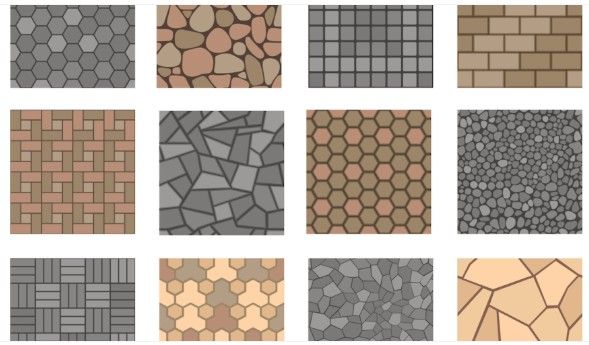
Pavers are a popular choice for outdoor spaces like driveways, patios, and walkways. With so many materials, colors, and styles to choose from, picking the right one can feel overwhelming. This guide breaks down the top 13 paver types to help you decide what’s best for your project. What Are Pavers? Pavers—also known as paving stones—are flat materials used to build hard surfaces outdoors. They’re available in different materials like concrete, stone, brick, and clay, and come in a range of shapes, colors, and textures. Types of Pavers 1. Concrete Pavers Made from a mix of cement and aggregate, then molded and dried. Pros: Affordable ($4–$10/sq ft) Available in many shapes, sizes, and colors More durable than poured concrete Cons: Optional sealing needed every 3–5 years Slightly pricier than poured concrete 2. Brick Pavers Made from kiln-fired clay, known for their classic red or brown look. Pros: Color stays vibrant over time Multiple sizes available Cost: $6–$12/sq ft Cons: Limited to red, brown, and pink shades Not ideal in freeze-thaw climates Optional sealing required every 3–5 years Inconsistent sizes 3. Limestone Pavers Natural stone used historically in major structures. Can be smooth or textured. Pros: Durable and natural-looking Affordable ($5–$10/sq ft) Cons: Needs sealing every 3–5 years Prone to staining Color variation may occur Not all are freeze/thaw resistant Can be tricky to install evenly 4. Flagstone Pavers Flat pieces split from sedimentary rock, often with irregular shapes. Pros: Unique natural look Slip-resistant Available in various sizes and colors Cons: Expensive ($15–$20/sq ft) Optional sealing recommended 5. Bluestone Slabs Fine-grained sandstone available in shades of blue and gray. Pros: Stylish and durable for patios Can be cut into many shapes Cons: High cost ($17–$25/sq ft) Can’t be used in driveways Sensitive to deicing salts Absorbs and retains heat 6. Marble Slabs Luxury material created from heated limestone, often used for upscale patios. Pros: Elegant and eye-catching Long-lasting Cons: Expensive ($25–$50/sq ft) Slippery when wet Stains easily Requires sealing every 3–4 years Conducts heat 7. Travertine Pavers A type of limestone formed near hot springs, known for its warm tones. Pros: Attractive beige color options More affordable than marble ($5–$15/sq ft) Cons: Porous, collects dirt Needs sealing every 1–2 years Acidic substances may stain 8. Porcelain Tile Pavers Made from fired clay, designed to mimic natural stone but with higher durability. Pros: Tough and weather-resistant Easy to clean No sealing needed Cons: Expensive ($12–$20/sq ft) Can be slippery when wet Requires special tools to cut Fragile during installation 9. Cobblestone Pavers Timeless choice made from granite, basalt, or limestone. Popular in Europe. Pros: Extremely durable Unique look with many color options Minimal maintenance Cons: Expensive ($16–$30/sq ft) Installation is time-consuming Tough to remove snow 10. Rubber Pavers Made from recycled rubber, safe and cushioned underfoot. Pros: Slip-resistant and shock-absorbent Many color and shape options Cons: Costly ($10–$15/sq ft) Not ideal for high-traffic areas like driveways Fades in sunlight May crack or chip over time 11. Gravel Loose crushed stone used for informal or rustic walkways and driveways. Pros: Very affordable ($2–$10/sq ft) Easy to install Great drainage Cons: Uneven surface Limited color choices Not visually refined 12. Granite Pavers Tough stone formed deep underground, used for both decorative and functional purposes. Pros: Great in harsh weather Easy to clean Custom shapes and sizes available Cons: Expensive ($25–$45/sq ft) Needs anti-slip treatment 13. Plastic Pavers Made from recycled materials. Best used in light-traffic or decorative areas. Pros: Budget-friendly ($4–$10/sq ft) Lightweight and easy to install Available in many styles Cons: Not durable Limited availability Fades easily Not ideal for heavy foot or car traffic Choosing by Style (Not Material)? If you know the look you want, you can choose by style: Interlocking: Puzzle-like fit (great for concrete and brick) Tumbled: Weathered, rustic appearance Textured: Slip-resistant surface (ideal for driveways and pool areas) Smooth: Sleek, modern look What’s Best for My Project? Driveways: Concrete, Brick, Cobblestone Durable, easy to maintain Walkways: Concrete, Brick, Flagstone, Granite, Travertine Slip-resistant and tough Patios: Concrete, Porcelain, or Travertine Stylish, low upkeep, weather-resistant
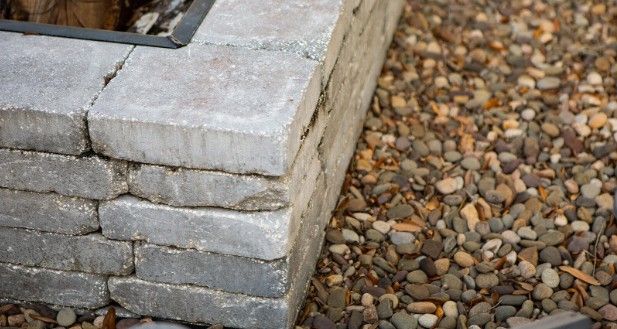
When it comes to landscaping in Florida, natural stone is a great option — and yes, Florida has its own native stones to choose from! Here's a simplified breakdown of the most common ones and how they’re used: Coquina Coquina means "tiny shell" in Spanish. It's a soft, shell-based rock that hardens in air and has been used in Florida for centuries. It’s ideal for: Small patios Garden paths Coastal-themed landscaping Driveways (primarily as accents, as Coquina can be expensive) Limestone Florida is full of limestone underground. It’s used for: Pathways Patios Pool decks However, it's not always the best choice. Limestone can be pricey, messy, and harder to maintain compared to concrete pavers. Florida Fieldstone Boulders These rugged stones, often marine limestone, come in natural shapes and colors like white, tan, and gray. They look like coral when cleaned and are great for: Retaining walls Garden borders and walkways Dry creek beds (for both drainage and decoration) Water features like ponds or fountains Eye-catching landscape accents Why Concrete Pavers Are Still King We recommend concrete pavers over natural stone for most hardscaping projects: They’re cost-effective Easier to install Lower maintenance Provide a smoother surface for walking and furniture Natural stone, on the other hand, can shift, is harder to level, and usually requires more expensive mortar and labor. What About Stone Mulch? While rocks might seem low-maintenance, they trap debris, make weed control harder, and don’t help the soil. Mulch is a better option — it holds moisture and improves soil as it breaks down. So, while these look great once installed, over time they are harder to maintain, so probably skip this one! Final Thoughts Want to add a natural Florida touch to your landscape? Use native stones like fieldstone or coquina for borders, accents, and walkways. But when it comes to patios and high-traffic areas, stick with pavers for the best blend of beauty, durability, and price. Need help designing your dream yard? Work with a pro to make the most of local materials and keep your landscaping easy to care for and great to look at.
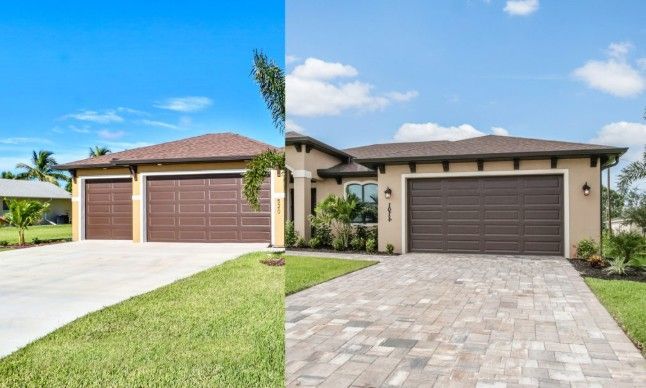
If you’re considering upgrading your driveway, the primary question is: concrete or pavers? While concrete may seem cheaper upfront, paver driveways tend to last longer, look better, and cost less to maintain over time—especially in the Southeast’s hot, humid, and sometimes stormy climate. Here's a simplified breakdown: Durability & Lifespan Concrete: Usually lasts 20–25 years, but cracks are common with weather changes. Fixing it often means resurfacing or replacing large sections—an expensive job. Pavers: Professionally installed pavers can last 30–50 years with basic care. If one paver gets damaged, you just replace that piece—no full redo needed. Example: A homeowner had to resurface their concrete driveway after 15 years—and spent nearly double the original cost. Maintenance & Repairs Pavers: Designed to move slightly with the ground, so cracking is rare. Individual stones can be swapped out easily if stained or broken. Joint sand (for stability) is refreshed every 3–5 years—a simple and affordable task. Concrete: Vulnerable to cracking from rain, heat, or freeze-thaw cycles. Repairs often require heavy work like resurfacing. Once cracks appear, they usually spread and worsen. Over a few decades, concrete can cost more to maintain than pavers. Design & Curb Appeal Pavers: Come in a wide variety of styles—Old Savannah Brick, Charcoal Blend, Travertine, and more. Design patterns like herringbone, basketweave, and running bond. Easily customized with borders, curves, or decorative inlays to match any home style. Concrete: Can be stamped, stained, or textured—but the look is hard to change later. Doesn’t offer the same depth, color range, or high-end appearance as pavers. Want to boost curb appeal? Pavers give you far more creative options. Why Choose Us Licensed, insured, and bonded with over 20 years of experience Fully custom driveway designs using premium materials Expert installation with engineered bases, edge restraints, and polymeric sand for lasting results. Ongoing maintenance plans with inspections, re-sanding, and sealing 5-Star Rated with over 120 Verified Reviews and Counting Bottom Line: Concrete may seem cheaper up front, but pavers offer more beauty, flexibility, and long-term value—especially in Palm Beach County, where home prices are higher. Future Buyers expect more, and a luxurious paver driveway will offer a sense of style, luxury and extra panache. When quality and curb appeal matter, pavers win.
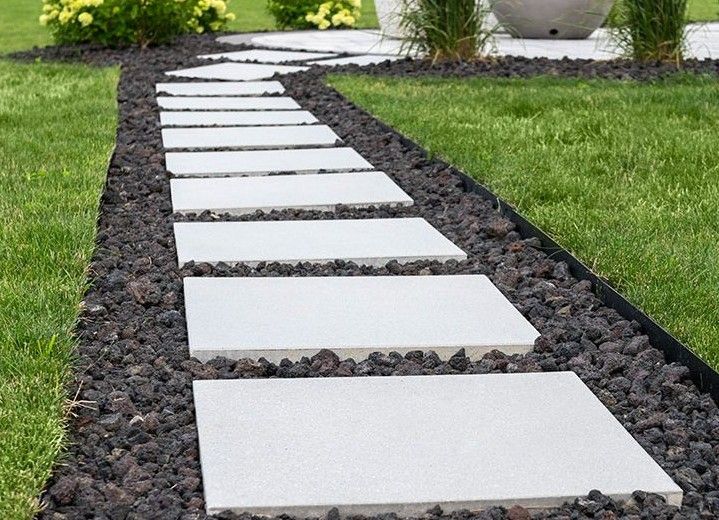
Outdoor spaces keep getting better, and in 2025, paver designs are focusing on style, function, and comfort. Whether it’s your patio, driveway, or pool area, these fresh trends will help create a beautiful and long-lasting space. 1. Large-Format Pavers Bigger pavers are in. Clean, modern, and sleek—these oversized styles work well with both beach and city homes. Popular Sizes: 24"x24" concrete slabs Oversized porcelain tiles Large natural stone panels They create a smooth, open feel—great for patios, pool decks, and courtyards. 2. Earthy, Natural Colors Warm tones are making a comeback. Instead of just gray, think sandy beige, terracotta, taupe, and soft limestone. These colors blend perfectly with Palm Beach County’s coastal and garden landscapes. 3. Mixing Textures and Materials One style doesn't fit all—2025 is all about mixing textures. Combining smooth and rough finishes adds depth and interest. Ideas to Try: Smooth concrete with cobblestone borders Travertine with granite accents Permeable pavers alongside traditional concrete This trend gives your space a custom, designer look. 4. Eco-Friendly Permeable Pavers More homeowners are going green. Permeable pavers let rainwater soak into the ground, reducing flooding and runoff—great for coastal towns around Palm Beach County. Options Include: Interlocking permeable concrete Gravel-based systems Grass-filled grid pavers They’re functional, stylish, and HOA-friendly. 5. Built-In Features Outdoor areas are becoming full living spaces. Pavers are now used to support features like: Outdoor kitchens and fire pits Built-in seating and planters LED lights set into the pavers Your outdoor area becomes a place to relax, cook, and entertain—day or night, all year round. Build Your Dream Space We is here to help you bring your vision to life. Whether you’re upgrading or starting fresh, our team can guide you through the latest trends and create a custom plan that fits your style and needs.